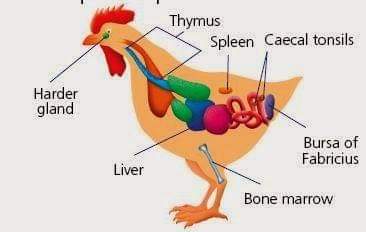ORAL CALCIUM IS IMPORTANT FOR LAYING HEN
Chickens need calcium. It’s important for their egg production. Hens without enough of it in theirdiets can lay soft or no shell eggs. Fortunately, it’s easy and inexpensive to add calcium to their diets.
First, if you have laying hens, make sure you’re feeding them a layer feed. This will automatically contain higher levels of calcium. But that alone is usually not enough.
It’s best to also supplement their diet with additional calcium. This can be done in more than one way. There is commercial calcium for chickens at any feed store. This is generally coursely ground lime or oyster shell and comes in small bags that are perfect for the urban chicken owner.
Sources of Calcium
Placing small containers of calcium (and also one of grit) in the chicken run allows the chickens to eat as much calcium as they want, when they need it. Their bodies will tell them how much.
Another option is to use the hen’s egg shells. To do this, it’s important to bake the shells first. This will kill any lurking bacteria in the shells, change the flavor of the shells (so that your hens won’t get any ideas about pecking their own eggs after they’ve tasted the shells), and also softens them a bit.
Baking shells are easy. Just place them on a cookie sheet and bake for around 30 minutes with an oven set to 225 degrees. When they’re done, place them in a large bag and crush with a rolling pin. Now, they’re ready to serve.crushing baked egg shells for chickens
Some chicken owners say never to feed shells to your chickens for fear of them eating their own eggs. I’ve never had that problem though. The crushed shells are so popular with my hens, I mix them with oyster shell to make them last longer. And still, even with their popularity, I haven’t had to deal with them eating their eggs before I can get to them.
Egg shells are a great source of calcium and I love the fact that they’re recycled. Since becoming a chicken farmer, I understand the preciousness of each egg that’s laid, so it’s wonderful to be able to use the whole egg, not just the insides.
Physiology of Calcium in body
The eggshell is a highly specialized mineralized structure, which provides protection against physical damage and penetration by micro-organisms. The egg shell consists of the inner and outer shell membranes, the true shell and the cuticle. The crystalline layer of the shell, which is responsible for its mechanical strength, consists of more than 90% calcium in the form of calcium carbonate. Calcium is absorbed from the feed in the intestine. Provided that sufficient calcium (3.8–4.2%) is present in the feed, the process of calcium uptake, deposition and excretion is regulated by vitamin D3 and its metabolites.
Vitamin D3 is absorbed from the intestine in association with fats and requires the presence of bile salts for absorption. It is transported via the portal circulation to the liver, where it is accumulated. The first transformation occurs in the liver, where vitamin D3 is hydroxylated to become 25-hydroxyvitamin D3(25-OH D3). This vitamin D3 metabolite is then transported to the kidney where it is converted to the most active hormonal compound 1,25-dihydroxyvitamin D3 (1,25-(OH)2 D3). The production of 1,25-(OH)2 D3 is tightly regulated by parathyroid hormone (PTH) in response to serum calcium. If plasma calcium is low, PTH secretion is induced, which stimulates the hydroxylation of 25-OH D3 to 1,25-(OH)2 D3. This compound will increase calcium absorption in the intestine, mobilize calcium from the bones and reduce calcium excretion via the kidney. If plasma calcium is high, first PTH secretion and then 1,25-(OH)2 D3 production are suppressed, which result in a reduction of calcium absorption in the gut as well as calcium resorption from the bones and an increase in calcium excretion. Therefore it is of utmost importance for an optimum egg shell quality to optimize calcium supply and secure sufficient vitamin D3 activity available to the laying hen.
Dr.MN Bharati,Poultry consultant.
Reference-On request


